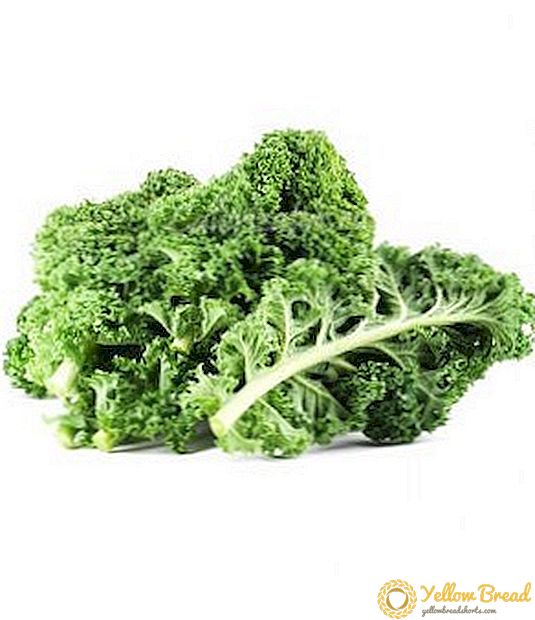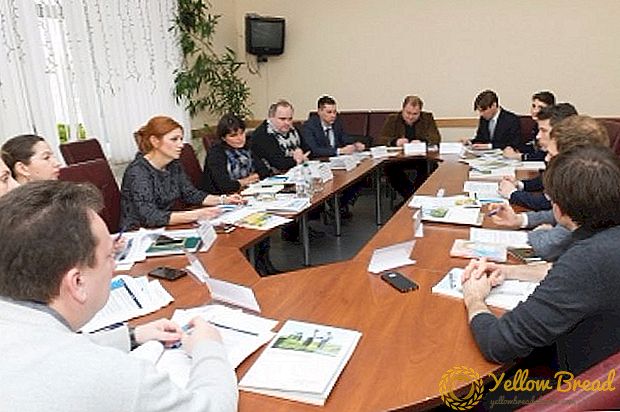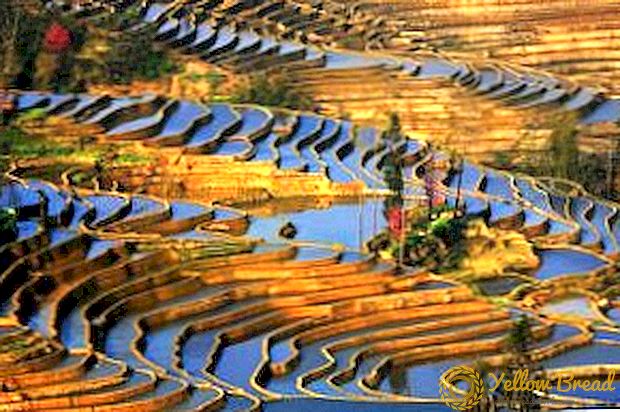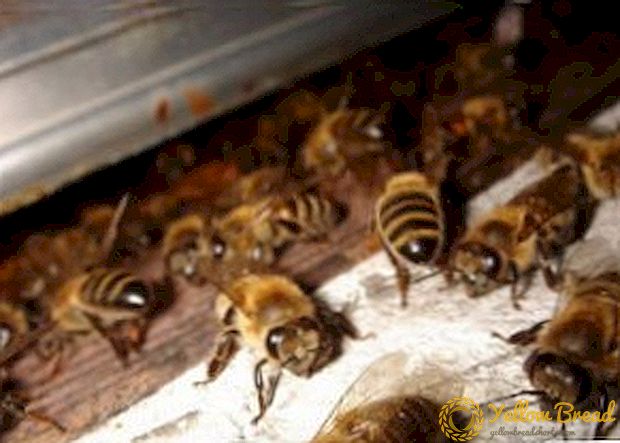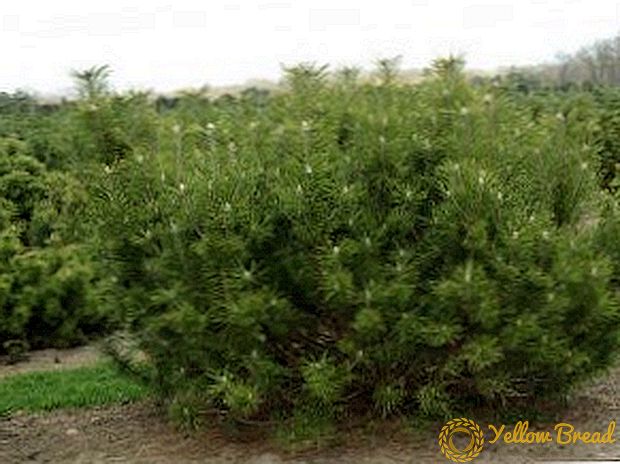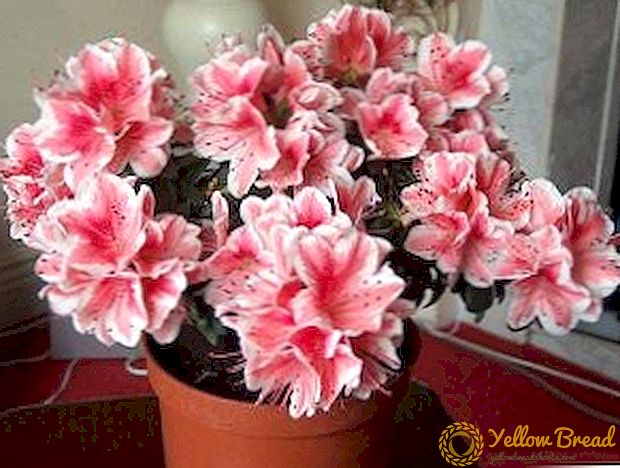 Pepper belongs to the traditional vegetable crops, which fill the daily diet with nutrients in any season of the year. That is why throughout the warm period of the year, many are trying to grow it in their summer cottage. At a time when much has been written about caring for a plant in the garden, little has been said about how to germinate pepper seeds and get healthy seedlings.
Pepper belongs to the traditional vegetable crops, which fill the daily diet with nutrients in any season of the year. That is why throughout the warm period of the year, many are trying to grow it in their summer cottage. At a time when much has been written about caring for a plant in the garden, little has been said about how to germinate pepper seeds and get healthy seedlings.
That is why the cultivation of viable and fruiting plants for many compatriots remains a mystery, which ultimately results in a modest harvest and wasted efforts. Today we will reveal all the secrets of growing quality seedlings and learn the basic subtleties of this process.
- Planting dates
- Sowing rules [than bad without preparation]
- How to speed up the process?
- Calibration
- Stimulation
- Germination
- Sowing
- The best conditions for seedlings
Planting dates
The timing of sowing pepper is strictly dependent on which group of varieties the seed belongs to. Therefore, before sowing seeds, it is necessary to familiarize themselves with their agronomic characteristics. In modern truck farming there are the following types of varieties:
- superearly (less than 100 days for the appearance of ripe fruit);
- early (bear an average of 120 days);
- middle-ripened (give ripe fruits in 120-130 days);
- late (for ripening the fruit takes more than 130 days).
 Due to the fact that pepper is a heat-loving plant, before sowing seeds it is necessary to take into account all the climatic features of the region, since the plant does not develop at daytime temperatures below +20 ° C. This rule applies to seedlings, as the seeds of pepper grow at low temperatures long enough, and in some cases even die.
Due to the fact that pepper is a heat-loving plant, before sowing seeds it is necessary to take into account all the climatic features of the region, since the plant does not develop at daytime temperatures below +20 ° C. This rule applies to seedlings, as the seeds of pepper grow at low temperatures long enough, and in some cases even die.
The optimal period for planting seedlings in the temperate zone is the end of May or the beginning of June. Therefore, when sowing, it is necessary to proceed from the fact that by this time the plants should have passed at least half of the growing season and be 100% ready for full-bloom. Based on the above, the optimal time for sowing pepper to seedlings are:
- for superearly varieties - The first half of April (10-15), a favorable period for the early ones will be the end of March - the beginning of April, the mid-season is sown no later than mid-March;
- well and late varieties taken to sow in early March. With strict observance of the above, in the second half of July your table will be full of fragrant and bright fruits, and the harvest period will last until the first half of August. The described periods are approximate, since apart from the growing season you must take into account how long it takes for the seeds to begin to germinate.
For colder or hotter climate zones, these periods will be slightly different. In this case, the following rule should be used: superearly varieties are sown on seedlings 50 days before planting in open ground, early ones - for 60-65, middle-ripening - for 65-70 and late - for 75-80 days. It should be borne in mind that the average air temperature during the light period of the day should not fall below +19 ° C, otherwise the pepper may die in open ground.  Therefore, depending on the variety and climatic region, the seeds of sweet pepper for seedlings can be sown in the period from early February to early May.
Therefore, depending on the variety and climatic region, the seeds of sweet pepper for seedlings can be sown in the period from early February to early May.
Sowing rules [than bad without preparation]
Most of the gardeners at the stage of receiving seedlings make many fatal mistakes, as it is rather difficult to germinate pepper from seeds and achieve healthy plants. This leads to the fact that the seed and the effort spent in vain, and the resulting plants in most cases die before transplanting into open soil.
That is why many gardeners refuse to self-germinate seeds and spend significant funds on ready seedlings. Today we will describe in detail the process of sprouting pepper from seeds, which will help many people not only save their strength, but also save money.
So, after you have decided on a variety, you need to find out what type it belongs to (regarding the time of fruit ripening).After that, it is necessary to determine the exact calendar period for sowing. Next comes the process of preliminary preparation of seed. It mainly consists in the disinfection of seeds. 
The process is carried out in several ways:
- seeds are kept for 20 minutes in an aqueous solution of potassium permanganate (potassium permanganate), after which they are soaked for 18 hours in a special plant growth stimulator ("Zircon", "Appin", etc.);
- seeds are disinfected for 20 minutes in a 2% solution of potassium permanganate, and then kept for 6 hours in melted snow water or in an aqueous solution prepared from aloe juice.
When using purchased pickled seeds, sharpened in a capsule, they are not retrained, as the seed is decontaminated and processed by special growth stimulants under factory conditions.
How to speed up the process?
In order to improve the efficiency of germination and the quality of seedlings, in modern agricultural practice they use many ways. But most of them cannot be made at home, because no matter how much you try to do it, you will not be able to reach the professional level of the material and technical base. In this case, experienced gardeners use several secrets that help in a few days to see how the long-awaited pepper begins to sprout. Consider the most popular ones. 
Calibration
Calibration is a preliminary screening of non-viable seeds. This method of increasing the effectiveness of germination is resorted to by both large companies and amateurs. The method is quite effective, simple and straightforward. Its essence lies in the fact that viable and damaged seeds differ in different weights. Therefore, in order to identify deviations in the mass of seeds, they are poured into a container with water. For 10 minutes, a viable seed material settles to the bottom of the pot, well, everything that emerges is rejected. This method is quite effective and popular among domestic gardeners.
Stimulation
Stimulation seed germination using special solutions is one of the most effective ways to accelerate seed germination. The essence of the method lies in the fact that the seeds are soaked in special solutions that intensify the processes of cell division in the seed itself. As a result, seed germination can be accelerated several times. In addition, growth promoters make it possible to get a healthy and strong plant.  The method has been known for quite some time; in the modern world, special chemicals are used for this, synthesized on the basis of natural components of the environment. At home, for more than a decade, people have been using traditional methods of preparing solutions-stimulants, which are based on derivatives of living organisms (willow juice, aloe juice, chicken eggs, etc.).
The method has been known for quite some time; in the modern world, special chemicals are used for this, synthesized on the basis of natural components of the environment. At home, for more than a decade, people have been using traditional methods of preparing solutions-stimulants, which are based on derivatives of living organisms (willow juice, aloe juice, chicken eggs, etc.).
Germination
Sprouting seeds in gauze is one of the easiest and most unpretentious ways to accelerate the growth of seedlings. But when using it, it is important to know at what temperature the seeds germinate best, since without this it will not be possible to speed up the process. The essence of the method lies in the fact that at the bottom of a small light-transparent vessel it is necessary to put a triple layer of ordinary gauze or bandage. 
After that, place the prepared seeds on a gauze pad in one layer carefully, cover them with gauze on top, then moisten all with tap water and put them in a warm place (about +26 ° C). With timely moistening of seeds on a wet gauze pad, within a few days the first shoots will appear. After this, the sprouts are ready for transplantation into the soil substrate.
Sowing
The procedure for sowing pepper is not much different from sowing seeds of another crop. The prepared seed is sent to the soil, wrapped in a small layer of soil, poured over with water and placed in a bright warm place.To speed up the process, the vessel with seeds must be covered with a transparent plastic bag, this will create the conditions of a mini-greenhouse with high humidity and appropriate temperature conditions.
In addition, in the case of sowing pepper, many professional gardeners recommend using a little trick. The number of germinated seeds or sprouts should be at least 1 per 1 sq. Km. see. In this case, a large sample makes it possible to choose the strongest and most promising from the maximum number of shoots. Also, in the early stages of seedlings, thickened sowing is capable of self-stimulation processes.
This is due to the fact that during germination the seeds secrete natural growth stimulants in their habitat. As a result, the growth of stronger plants is stimulated due to unused substances of the weak.
The best conditions for seedlings
Pepper is a rather whimsical plant, therefore, in order to provide it with the best conditions for germination and active growth, it is necessary to possess a set of knowledge regarding optimal environmental parameters.  Based on many professional agronomic literary sources, it can be stated that in order to accelerate the development of pepper seedlings, it is necessary:
Based on many professional agronomic literary sources, it can be stated that in order to accelerate the development of pepper seedlings, it is necessary:
- High soil moisture. The germination substrate must be constantly wet, but without excess water. To do this, sprouts must be watered abundantly at least 2 times a day.
- Enough heat. Pepper is a heat-loving plant, for growing seedlings it is necessary to adhere to the temperature regime of + 26 ... +28 ° С.
- Great lighting. In order for the sprouts to show the maximum growth force, after the appearance of the first shoots, the capacity with the plants must be placed on the brightest place, or artificial light should be provided at least 12 hours a day.
Sweet pepper is a rather whimsical and difficult plant to grow. In addition, obtaining seedlings of this vegetable culture is complicated by many varietal and species characteristics. But with full observance of all the secrets described above, sprouting pepper seeds at home can become an easy task, which will result in fresh and fragrant fruits.

